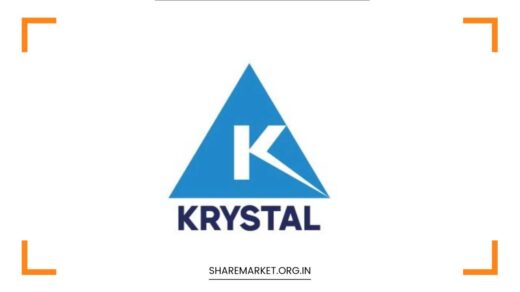LIC Q2 2023 Results: 50% Profit Decline Explained by LIC as Incomparable, Find Out Why

LIC Q2 2023 Results
LIC Q2 Results: 50% Profit Decline and Accounting Policy Change Explained
The second quarter of 2023 was a challenging period for LIC, India’s largest life insurance company. Their net profit saw a dramatic 50% decline, falling to Rs 7,925 crore, compared to Rs 15,952 crore in the same period last year.
However, LIC has issued a press release to clarify that the net profit for the September quarter of this year cannot be directly compared to that of the previous year.
The reason behind this lack of comparability lies in a significant accounting policy change that LIC implemented in September of the previous year.
The Accounting Policy Change
LIC stated that in September of the prior year, it decided to alter its accounting policy in terms of the transfer of amounts (net of tax). Specifically, Rs 13,768 crore (net of tax) was transferred during the September half.
This amount was split, with Rs 7,491 crore transferred in the June quarter and Rs 6,277 crore transferred in the September quarter.
This change in accounting policy impacts the comparability of net profit for the September 2023 quarter with that of the previous year.
It’s important to understand that changes in accounting policies can significantly impact a company’s financial statements and make year-on-year comparisons difficult.
Such changes are often driven by evolving regulatory requirements or evolving business needs, but they can sometimes obscure the true financial performance of a company during transitional periods.
Key Highlights of LIC’s Q2 Results
In addition to the profit decline and the accounting policy change, LIC’s Q2 results featured several other notable developments:
- Net Premium Income Decline: LIC experienced a 19% drop in net premium income during the September quarter, which amounted to Rs 1.07 lakh crore. This decline in premium income may be attributed to various factors, including market dynamics, competition, and customer preferences.
- NPA Changes: While the gross non-performing asset (NPA) percentage dropped from 5.60% to 2.43%, there was no significant change in net NPA. The reduction in gross NPA is a positive indicator as it suggests improved asset quality, but close attention to net NPA is crucial to assess the true state of the company’s bad loans.
- Value of New Business (VNB): LIC saw a decrease in VNB from Rs 3,677 crore to Rs 3,304 crore on an annual basis during the September half. The decline in VNB may be attributed to factors such as competitive pressures, changes in the mix of insurance products offered, and alterations in pricing strategies. Despite this decline, the VNB margin remained at 14.6% during this period.
- LIC Chairman’s Remarks: Siddharth Mohanty, the Chairman of LIC, commented on the Q2 results, attributing the changes in VNB margin to competition, alterations in the product mix, and changes in pricing strategies. These insights from the chairman provide valuable context for understanding the drivers behind the company’s financial performance.
- Income from Investments: Despite the decline in net profit, LIC’s income from investments increased from Rs 84,103 crore to Rs 93,942 crore on an annual basis during the September quarter. This suggests that LIC was able to generate higher returns from its investment portfolio, potentially offsetting some of the profit decline in other areas.
- Solvency Ratio: The solvency ratio, a key measure of an insurer’s financial stability, slightly improved from 1.88% to 1.90%. A higher solvency ratio indicates greater financial strength and capacity to meet obligations, which is crucial in the insurance industry.
- First-Year Premium and Net Commission: First-year premium increased from Rs 9,142 crore to Rs 9,988 crore on an annual basis in the September quarter. The rise in first-year premium is a positive sign as it reflects the company’s ability to attract new business. Net commission also increased from Rs 5,807 crore to Rs 6,077 crore.
- Group Business Performance: In the group business segment, LIC experienced a notable decline in total premium income, dropping from Rs 1.02 lakh crore to Rs 70,977 crore in the September half. Mohanty expressed optimism, foreseeing a rebound in this segment in the upcoming quarters of the financial year 2024.
- Asset Under Management (AUM) Growth: LIC’s asset under management (AUM) witnessed a significant increase of 10.47%, reaching Rs 47.43 lakh crore from Rs 42.93 lakh crore. AUM growth is a positive indicator as it reflects the company’s ability to attract and manage investments from policyholders and clients.
In conclusion, LIC’s Q2 results for 2023, marked by a 50% decline in net profit, are influenced by a significant change in accounting policy.
While this change makes direct year-on-year comparisons challenging, it’s essential to consider the broader financial context.
The performance indicators discussed, including net premium income, NPA changes, VNB, income from investments, solvency ratio, first-year premium, net commission, group business, and AUM growth, provide a comprehensive overview of LIC’s financial performance and strategic positioning.
The insurance industry is highly competitive, and companies like LIC are continually adapting to evolving market dynamics and regulatory changes.
It’s worth noting that the VNB margin was affected by various factors, including competition and shifts in product offerings.
LIC’s ability to attract new business, manage its investments effectively, and improve its asset quality are key factors to watch in the coming quarters.
Investors and analysts will closely monitor LIC’s future performance to gauge its resilience and ability to adapt in the ever-changing insurance landscape.
The company’s extensive asset base and strong market presence position it to address challenges and capitalize on opportunities in the insurance sector.

















